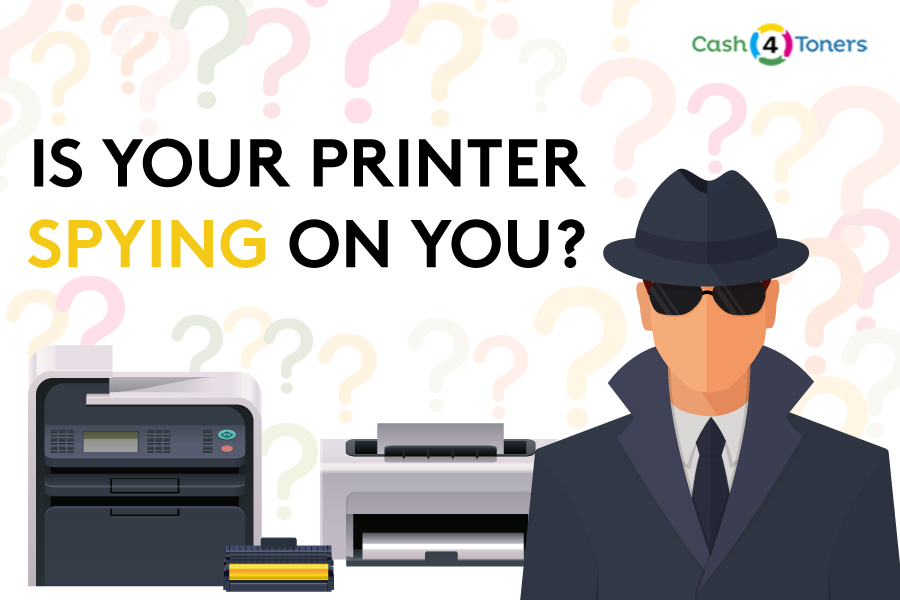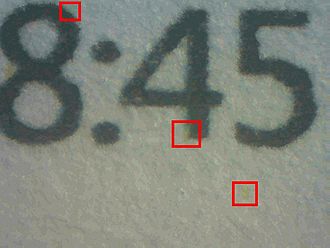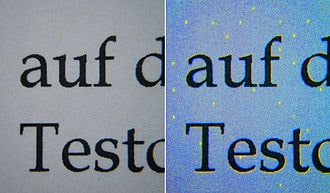CONTENTS:

CONTENTS:
Is your printer spying on you?
Yes, it is. So is your mobile phone, your car, and your web browser.
Machines keep records in their memory banks. Most of the time these records get destroyed when your electronic devices are trashed.
However, if you’re ever involved in an investigation, your devices provide clues about how they were used. Police track cell phones and credit cards to solve crimes.
Your printer has a story to tell too.
Printer Forensics
Printer stenography studies the history of printers and copiers.
This branch of forensic science uses digital clues to tell which machine printed a certain document and what time it was printed.
Printer forensics outed Reality Winner as a government whistle-blower in 2018.
As a result, people looked twice at their office printers. In addition, activists looked for software encryption solutions.
The Machine Identification Code was introduced in the mid-1980s to stop counterfeiters.
The Machine Identification Code
The United States Treasury, and governments around the world, feared color printers could be used to copy money.
As a result, Xerox created the Machine Identification Code (MIC) in the mid-1980s.
Every printer prints a series of repeating yellow dots know as the MIC.
The dots appear as tiny black spots when viewed under ultraviolet light, but are invisible to the naked eye.
In addition, color scanners spot the yellow dots on American cash, preventing bills from being scanned.
Xerox owns U.S. Patent No 5515451 for creating the MIC.

The MIC Catches Criminals
In October 2004, PCWorld reported Dutch police caught two forgers by tracing their fake money back to their Canon laser printer.
Within months, civil rights group Electronic Frontier Foundation began decoding the MIC.
The grid of yellow dots show the date and time the document was printed. In addition, it also shows the printer’s serial number.

The MIC Catches Whistle-blowers
In August 2018, Reality Winner, a former intelligence officer, admitted to leaking documents to a news outlet.
Investigators used the MIC to tell when and where the documents were printed.
The MIC, cross-referenced with security footage, revealed Winner as the whistle-blower.
The report Winner leaked allegedly showed Russian influence in the 2016 United States elections.
The MIC Through The Years
The MIC changes with the times. In 2018, scientists at the TU Dresden studied 106 printer models and found four types of codes.
While privacy seekers look for ways around the MIC, governments and printer makers stay one step ahead.
Furthermore, changes in laser strength and text shading can also be used to track printers. However, it is unknown if such methods are being used.
In addition, the EURion constellation (or Omron rings) is a pattern printed on currency. Color copiers know the pattern and will not copy currency.
Going Off Code
Want to avoid the MIC? For starters, you can buy an older printer that doesn’t use it.
HP Color Laserjet 4500 and 8500 series of printers don’t use tracking dots.
In addition, the Samsung CLP 500 series and several models of older Oki laser printers are MIC-free.
Any new color laser printer bought today will likely display MIC dots.
However, there are other ways to avoid the MIC.
Print and scan documents in black-and-white, or convert documents to black-and-white using an image editor. This removes the yellow dots.
In addition, it appears inkjet printers and black-and-white laser printers do not use the MIC.
It’s unknown if inkjets and black-and-white laser printers use another type of tracking code.